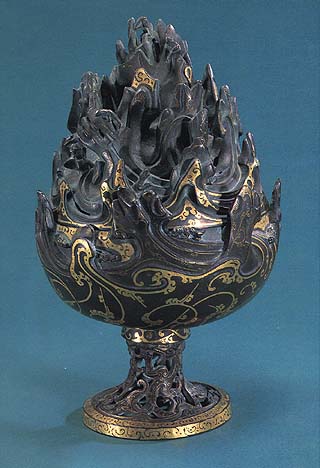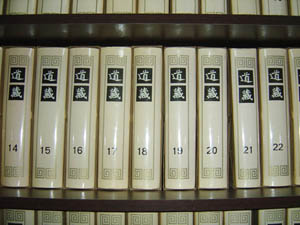Baguazhang's Contentious Beginnings
/ Wang Shujin
Wang ShujinKent Howard has translated a book by the famous Baguazhang teacher from Taiwan, Wang Shujin. He has also started a blog to promote it where he has written a number of short essays about the origins of Baguazhang. It is wonderful that someone is taking martial arts history seriously. In the most receint post he takes some time to debunk some of the conjecture out there. Then he says this:
The Story of Dong Haiquan being taught Bagua Zhang as a fully developed martial art by two mountain-dwelling Daoist recluses has all of the basic elements of many a martial art legend in China. All you need to do is change the names, and a few circumstances, and you have Zhang Sanfong creating Taiji Quan from a dream or Shaolin priests learning their art from an Indian monk. Chinese love to shroud their origin myths in the mists of antiquity. It lends them a certain air of distinction and provides an unassailable historical precedent.
There are several elements of this legend, however, that do not stand up well in the face of modern research. First, there has been no discoverable trace in history or literature of two Daoists named, Gu Jici and Shang Daoyuan in the Mount Ermei region of Szechuan Province. Researchers who combed those fabled mountains interviewing present day Daoist adepts found no temple records containing either name, nor of any Daoist recluses of that time who were known to teach martial arts. Second, facts point to Dong learning martial arts in his youth that contained many elements found in modern Bagua Zhang. Third, Dong was a member of the Quan Zhen sect of Daoism and learned a method of walking meditation that resembles Bagua Zhang circle walking patterns and stepping. Finally, Dong Haiquan seemed quite happy to allow the origins of Bagua Zhang to be obscured by legend rather than have contemporaries believe that he had synthesized it whole cloth from elemental skills derived from previous training.
....The last question to take up in our quest for the real Dong Haiquan is whether he popularized an art that had existed previously, or if he invented his own style by marrying disparate methodologies into one cohesive system. This task is made more difficult when you consider that Dong, when asked by his disciples where he learned Bagua Zhang, would comment that he received his art from “a man who lived in the mountains.” If the system existed before Dong Haiquan, we know it was not called Bagua Zhang. That name was unknown before his time. In fact, Dong’s first generation students stated the original name for the system was Zhuan Zhang (Rotating palms). Later it was expanded to Bagua Zhuan Zhang. Finally, probably near the end of Dong’s life, or perhaps even posthumously, it was shorted to Bagua Zhang.
....We can probably never say with absolute certainty if Dong Haiquan learned his art from another source, and merely popularized it, or whether he synthesized techniques learned from several sources and created an entirely new martial system. In any event, Dong was certainly good at marketing his product and keeping the source, as he played his cards, very close to the vest. As Lao Tzu once said, “The Sage wears rough clothing and embraces the jewel within!”
Here is the comment I left on his blog (not approved yet):
Thanks for putting this together.
I would ask the question: What reasons did he have for keeping Baguazhang's origins a secret?
As a marketing strategy it did work, so it is possible that marketing was his reason, but it's not a very good reason considering his main marketing strategy was being the best around. Perhaps his secretiveness was a personality quirk, but that isn't very convincing either. What isn't being said?
- The southern and western half of the country was rebel territory for from 1853-1870. What was he doing during the Taiping rebellion and the many other smaller rebellions during that time?
- What is the evidence that he was a Longmen Daoshi? It is problematic to say that Quanzhen is a "sect," it is a teaching lineage. He could have received "registers," jing (texts), transmissions, etc...from any lineage including Tibetan Banpo--it's all secret under penalty of death. If he had the title Daoshi, then legally speaking he had the rank of an imperial prince. All that stuff about being a eunuch could be discarded that way (see original essay). But the word "Daoshi" could have simply meant magician or wandering recluse.
- For most of the Ching Dynasty and much of the Ming Dynasty as well, Zhengyi Daoism was practiced in secret. It still is. When I visited Chengdu in 2001 I talked to a Chinese Anthropologist who told me that Zhengyi priests managed to hide amongst the poorest villages. He said they have found them, but they disappear by the next day and can not be found again. Daoists often change their names. There is NO reason to believe we could find two "mountain Daoshi" by their names.
- The Quanzhen walking "technique," like everything Quanzhen, is a simplification/purification of older ritual practices. The possibility of Daoist ritual origins for Baguazhang has barely even been scratched.
- Has anyone considered that the name Baguazhang may have been the original name of the art, but it was a secret name, only revealed when the political climate had changed? Rebel-heterodox "meditation" sects often practiced martial arts and named themselves after the trigrams! (See Esherick's "Origins of the Boxer Rebellion.")
- If there ever was anyone else in the early 1800's who practiced this kind of art, perhaps they were in the western part of the country, and perhaps they were wiped out--20 Million people died during the Taiping Rebellion. It kind of makes sense that he wouldn't want to talk about that in Beijing, there were still rebels fighting in 1870 when he started teaching.
Thanks for considering these ideas. ------ The daoist origins of Baguazhang is a repeating theme for me. If readers search the bagua category on the side they'll find a lot of material. People often say that internal martial arts were combined with internal alchemy. Some scholars may argue that ritual, alchemy and martial arts all have separate origins. That may be true, but for the last 2000 years they have been influencing each other. Ritual is the bigger, more encompassing, subject of the three. If you want to understand the origins of martial arts and alchemy, ritual is the place to start.





 The quest for power is endless.
The quest for power is endless. No, the Internal Martial Arts were developed by people who had already cultivated a subtle body; a weak, sensitive, feminine (yes I said that), humble, yielding, and desireless physicality. A body cultivated with the idea that lack of pretense is not only a moral way of being; but a moral way of moving.
No, the Internal Martial Arts were developed by people who had already cultivated a subtle body; a weak, sensitive, feminine (yes I said that), humble, yielding, and desireless physicality. A body cultivated with the idea that lack of pretense is not only a moral way of being; but a moral way of moving. A female friend of mine was recently attacked by a crazed crackhead half block from her house. He was big and he kicked her in the ribs.
A female friend of mine was recently attacked by a crazed crackhead half block from her house. He was big and he kicked her in the ribs. Hexagram 10 of the
Hexagram 10 of the  Chinese Internal Martial Arts cultivated with a Daoist perspective achieve quite the opposite results of what most people think. These arts are not about gaining control. They are not about preparing for some monstrous future attack. They are not about trying to control or predict the future.
Chinese Internal Martial Arts cultivated with a Daoist perspective achieve quite the opposite results of what most people think. These arts are not about gaining control. They are not about preparing for some monstrous future attack. They are not about trying to control or predict the future. In Buddhism they have the expression, "Skillful Means," to describe brilliant techniques on the road to enlightenment. But it's also kind of a Buddhist joke because the end result requires no skill at all.
In Buddhism they have the expression, "Skillful Means," to describe brilliant techniques on the road to enlightenment. But it's also kind of a Buddhist joke because the end result requires no skill at all. Her innocent response was good enough.
Her innocent response was good enough.


